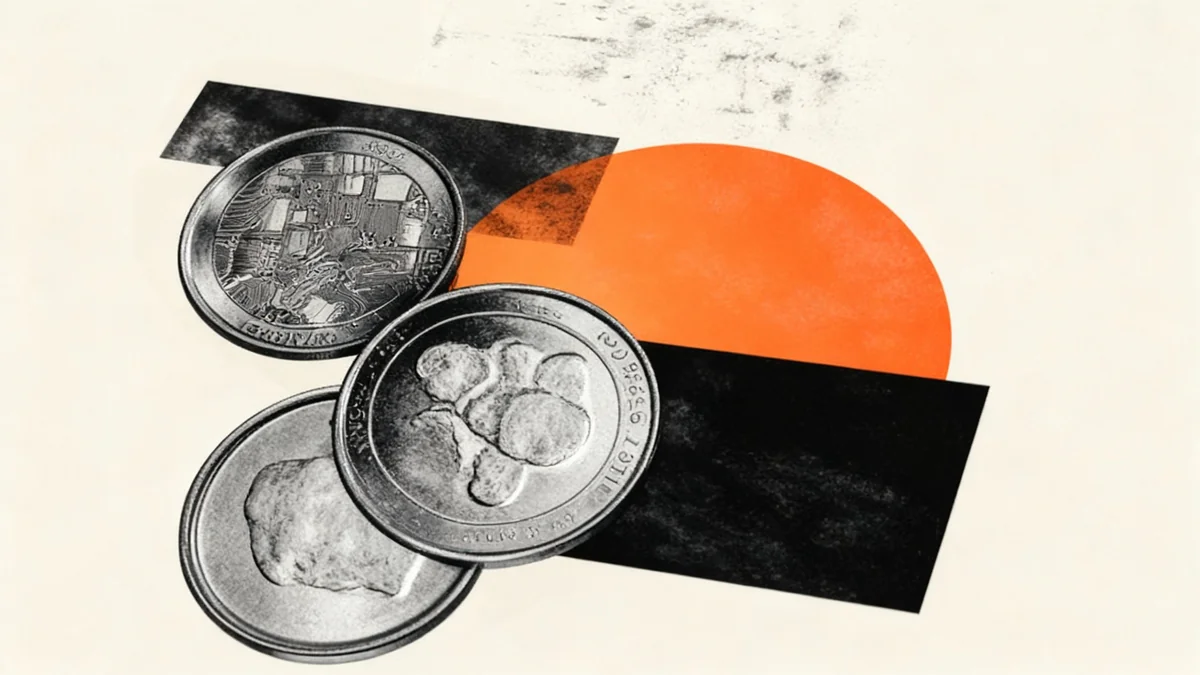Silver (XAG/USD) is trading just below the mid-$47.00s during Thursday's Asian session, showing a slight decrease of 0.20% for the day. Despite this minor dip, the white metal has managed to stay comfortably above its lowest point since September 25, which it touched earlier this week. This resilience indicates a cautious market as investors weigh various technical signals.
Key Takeaways
- Silver trades near $47.50, holding above recent lows.
- Technical indicators present a mixed outlook for XAG/USD.
- Strong resistance noted near $48.00; support at $47.00-$46.95.
- A move above $48.00 could signal bullish momentum.
- Industrial demand and safe-haven status influence prices.
Current Market Dynamics for Silver
The precious metal experienced a rebound this week from its 50-day Exponential Moving Average (EMA). This upward movement generally favors bullish sentiment among traders. However, daily chart oscillators have recently begun to show negative traction. This conflicting technical picture suggests that traders should exercise caution before making significant directional bets, as the recent corrective decline from the all-time high observed earlier this month may not be fully over.
Silver's inability to firmly establish itself above the $48.00 psychological mark indicates a strong resistance level. This area has consistently attracted sellers, preventing a sustained breakout. The current trading range reflects a battle between buyers and sellers, with neither side gaining a decisive advantage.
Silver's Industrial Role
Silver boasts the highest electrical conductivity among all metals, surpassing both copper and gold. This unique property makes it indispensable in various industrial applications, particularly in electronics and solar energy production.
Key Support and Resistance Levels
Looking at the immediate downside, the $47.00-$46.95 area is currently acting as a crucial support zone. If Silver breaks convincingly below this level, it could trigger a fresh wave of selling. Such a move might push XAG/USD below the $46.00 mark, potentially retesting the 50-day EMA support, which is currently near $45.55.
A breach of the $45.55 level would likely be seen as a significant bearish signal. This could drive the commodity further down towards the $45.00 psychological mark. Subsequent support levels are identified around the $44.45 region, then the $44.00 mark, and finally the $43.55 area. These levels represent key points where buyers might step in or where bearish momentum could accelerate.
Potential Upside Targets
On the upside, any positive momentum that pushes Silver beyond the $48.00 round figure will likely face immediate resistance. The $48.45-$48.50 region stands as a strong barrier where sellers are expected to emerge. A sustained move above this resistance would be a key trigger for bulls, indicating a potential shift in market sentiment.
Should buyers manage to clear the $48.50 hurdle, the path could open for a move towards the $49.00 mark. If this level is also breached, Silver could extend its momentum towards the $49.45 region, with the ultimate goal of reclaiming the significant $50.00 psychological mark. Achieving this would signify a robust bullish trend.
Understanding Silver as an Investment
Investors often turn to Silver for portfolio diversification, its intrinsic value, or as a hedge against inflation. While less popular than Gold, it serves a similar safe-haven role during economic uncertainty. Investment options include physical silver in coins or bars, or through Exchange Traded Funds (ETFs) that track its market price.
Factors Influencing Silver Prices
Several factors contribute to the fluctuations in Silver prices. Geopolitical instability and fears of a deep recession can elevate its price due to its status as a safe-haven asset, though typically to a lesser extent than Gold. As a yieldless asset, Silver tends to benefit from lower interest rates, which make holding non-yielding assets more attractive.
The strength of the US Dollar (USD) also plays a critical role, as Silver is primarily priced in dollars (XAG/USD). A stronger dollar generally keeps Silver prices subdued, while a weaker dollar tends to push them higher. Other significant influences include overall investment demand, the supply from mining operations—Silver is more abundant than Gold—and recycling rates.
"Silver's dual role as a precious metal and an industrial commodity means its price is affected by a unique blend of economic and manufacturing trends," observed a market analyst.
Industrial Demand and Global Economies
Industrial demand is a powerful driver for Silver prices. Its superior electrical conductivity makes it vital for sectors such as electronics and solar energy. A surge in industrial activity can significantly increase demand and, consequently, prices. Conversely, a slowdown in these sectors often leads to price declines.
Economic dynamics in major industrial nations like the US and China have a direct impact on Silver. Their large manufacturing sectors consume substantial amounts of Silver. In India, consumer demand for Silver jewelry also contributes significantly to price swings. These global economic indicators are closely watched by Silver traders.
The Gold/Silver Ratio and Market Sentiment
Silver prices typically follow the movements of Gold. When Gold prices rise, Silver usually moves in the same direction, reflecting their shared status as safe-haven assets. The Gold/Silver ratio provides insight into the relative valuation of the two metals, indicating how many ounces of Silver are needed to equal the value of one ounce of Gold.
A high Gold/Silver ratio might suggest that Silver is currently undervalued compared to Gold, or that Gold is overvalued. Conversely, a low ratio could indicate that Gold is undervalued relative to Silver. Investors often use this ratio to identify potential trading opportunities or to adjust their portfolio allocations between the two precious metals.
- Investment Demand: Drives prices up during uncertainty.
- Industrial Use: Key for electronics and solar panels.
- US Dollar Strength: Inverse relationship with Silver prices.
- Interest Rates: Lower rates often support Silver.
- Mining Supply: Affects overall availability and price.





